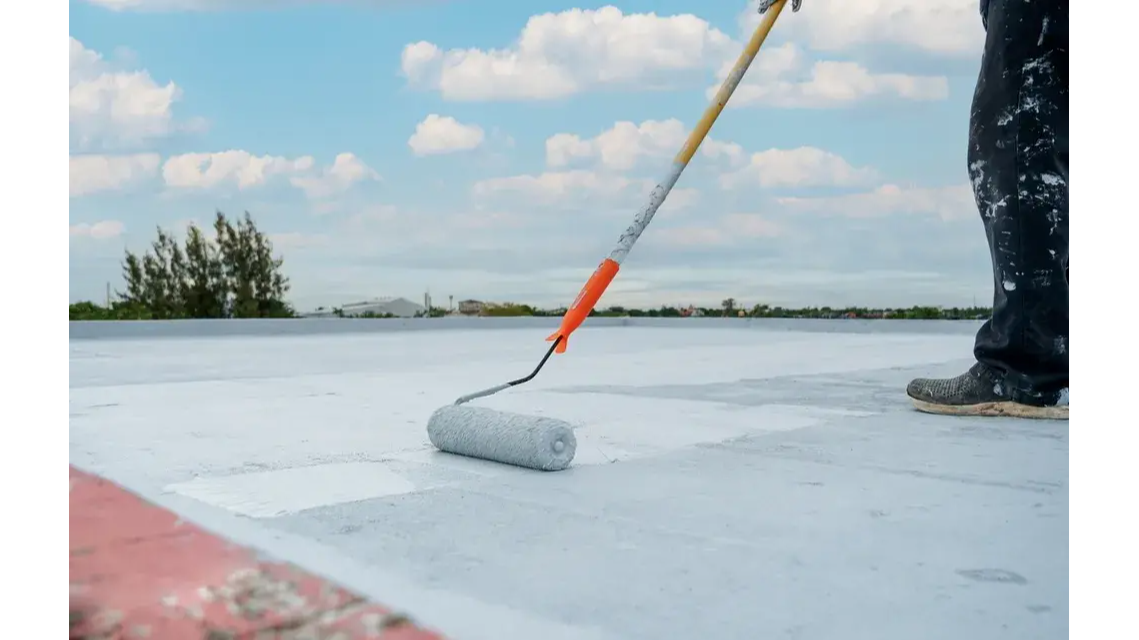Sometimes all your roof really needs is a tube of goop. No really – roof sealants can’t patch a big hole, but they can work wonders for small cracks, seams, and blocking UV rays! Find out which sealants work best, and how to use them.

Let me start by asking you this question: If your car got a small chip in the paint - would you throw it out and replace it?
I'm gonna guess the answer is probably not, because a little chip is nothing, especially if you get it fixed right away. Well, just like your car, a little damage to your commercial roof is no problem, but the key is to get it fixed promptly and properly, so the damage doesn't spread.
I had a chat with some about how roof sealants work, how they can save you a ton of money, and even how you can apply them yourself... though honestly, I'd leave it to the professionals for my business.
Here's the short version: If your roof has minor damage, a tube of sealant can patch it up in no time, for a fraction of the cost of a more extensive repair.
Like getting that chip in your paint fixed before it can spread, it's worth it.
Let's talk about what really matters - money.
Research shows that one of the most effective techniques for making your flat commercial roof last longer, without raising your long-term costs, is ensuring the roof remains sealed and in good repair by performing regular maintenance.
That's mainly for two reasons:
If you can't remember the last time you had your roof checked and maintained by a professional... you're probably due for an appointment.
Before you rush off to goop your roof with a tube of silicone, make sure you've got the right product.
There are several types of sealants commonly used today, with the most common options being silicone, acrylic, polyurethane, and rubber - but they're not all the same.
Each one has different benefits and unique potential problems, so making sure you're using the right type is absolutely essential. You can learn more about each type, what they're best at, and which one you should use, just check the
Of course, professional installation is always, always recommended - but their guide does explain how you can apply the sealants yourself, if you really feel it's necessary.
Whether you decide to apply the sealants yourself or hire a professional, it's important to schedule your sealant application for a dry day, as humidity or rain may cause damage to the new seal. Always check the drying times before you begin, as some formulas may require up to 48 hours to fully cure before they are ready for rainy weather.
So we know that roof sealants are highly recommended as a regular maintenance solution to manage minor cracks, small leaks, and UV damage. However, it's important to understand that sealants are a limited solution, which cannot help to fix major structural damage, holes, warped roofs, or existing water damage.
To put it another way, they're an excellent, even essential tool, in your roof fixing kit - but if you try to use sealants to solve major problems, you're just throwing money away.
If you want to cut your costs, you should have your roof inspected by a professional at least twice a year, preferably in the spring and fall seasons.
Why should we pay for inspections, on top of all the regular repairs? The reason is simple - they can help you to save way more than they ever cost.
These regular inspections help to catch and repair the smallest signs of damage before they can spread, and that helps to keep the costs to a minimum. Heck, they can often help to double the lifespan of an existing roof, allowing TPO and PVC roofs to last for up to 30 years.
So sure, there's a little bit of cost, but it's nothing compared to replacing your entire roof.
I've done the math, and you should too - you'll find that getting your roof repaired is like keeping your oil topped up in your car.
It's a whole lot more cost-effective to than regular complete replacements.
